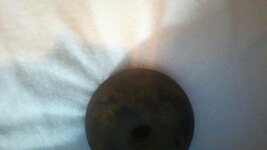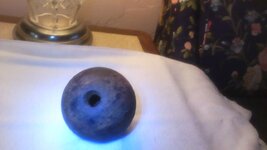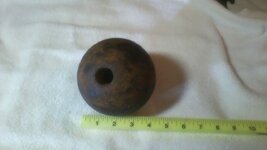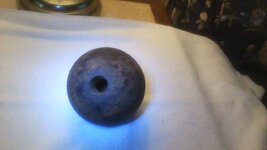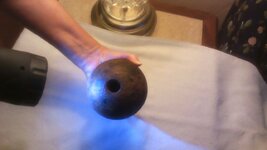I obtained what may be a cannon ball from a WWII veteran. It was packed in a cardboard box and stored in a closet. I have no other information on the object,
The ball weighs 8. 2 lb approximately, it is about 4 inches in diameter, hollow, 1 inch approximately on the fuse hole?, no poloygon inside, I cannot find a seam, and no exterior markings.
I was told the "cannon ball guy" may be-able to ID.
I would appreciate any help in the identification of the object.
John
The ball weighs 8. 2 lb approximately, it is about 4 inches in diameter, hollow, 1 inch approximately on the fuse hole?, no poloygon inside, I cannot find a seam, and no exterior markings.
I was told the "cannon ball guy" may be-able to ID.
I would appreciate any help in the identification of the object.
John


